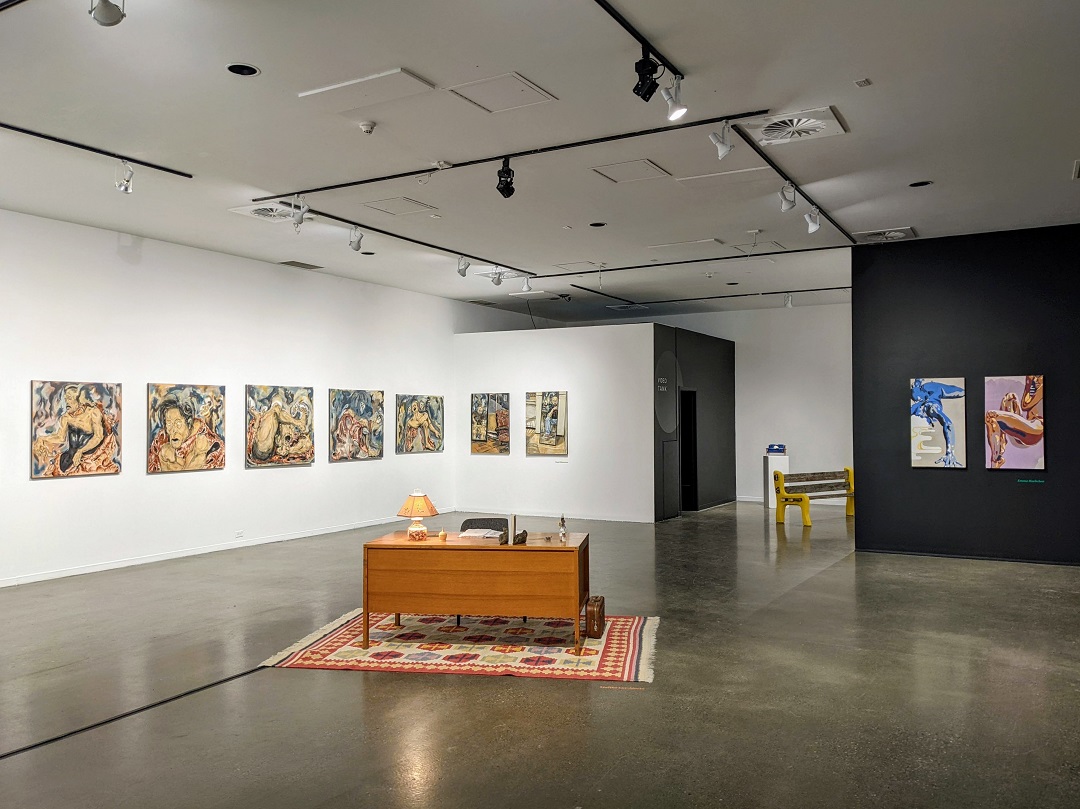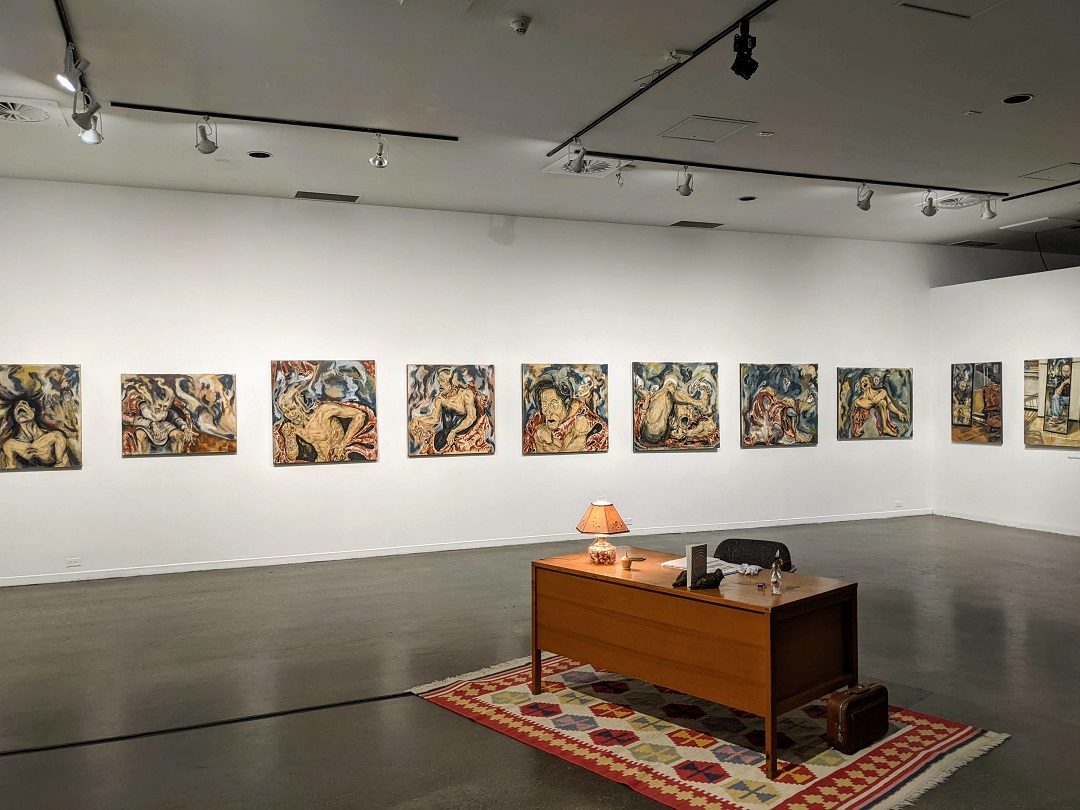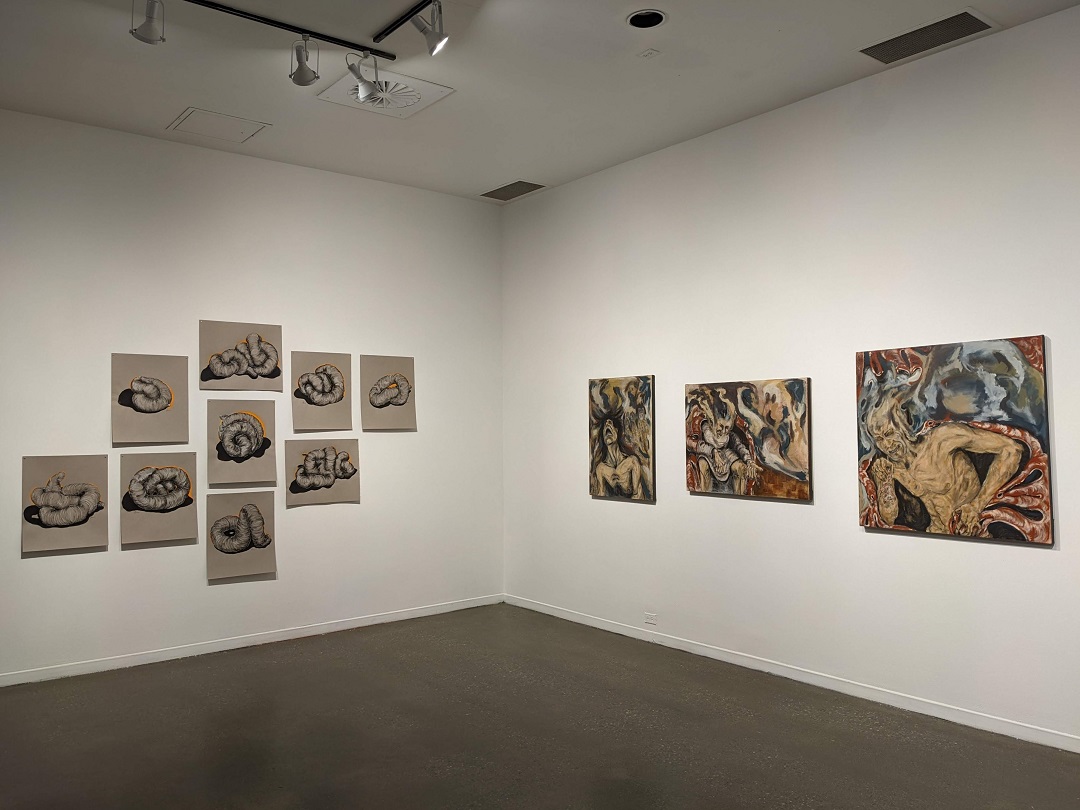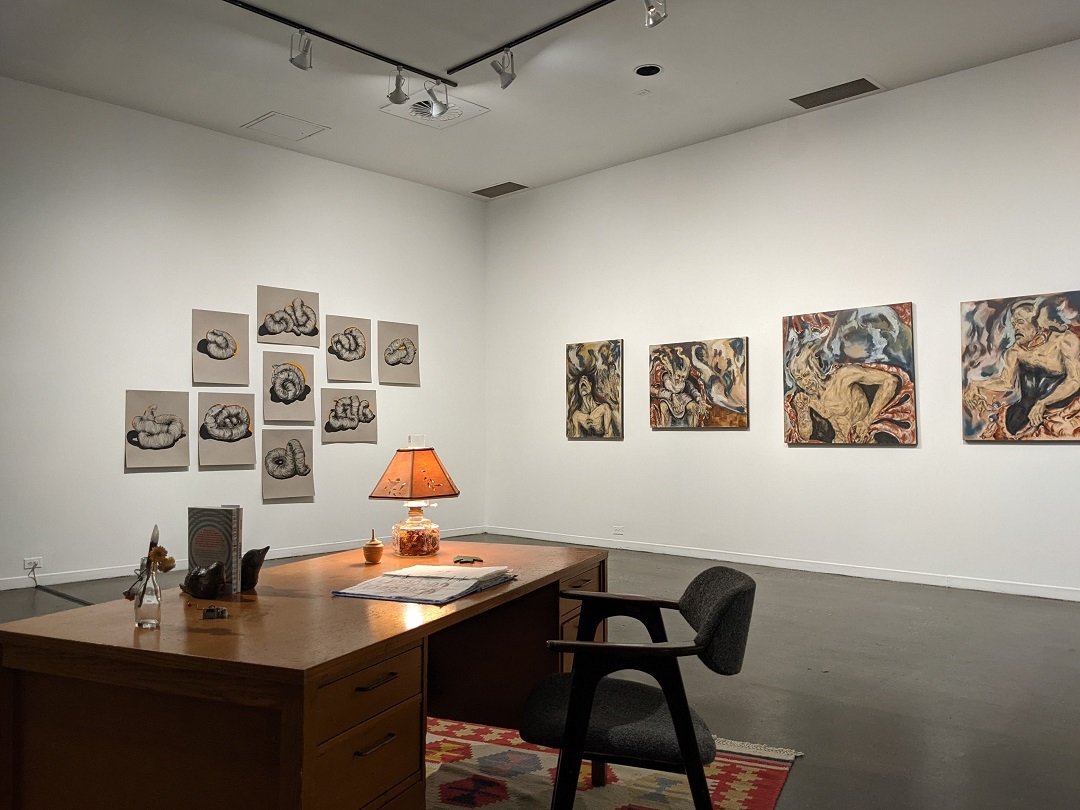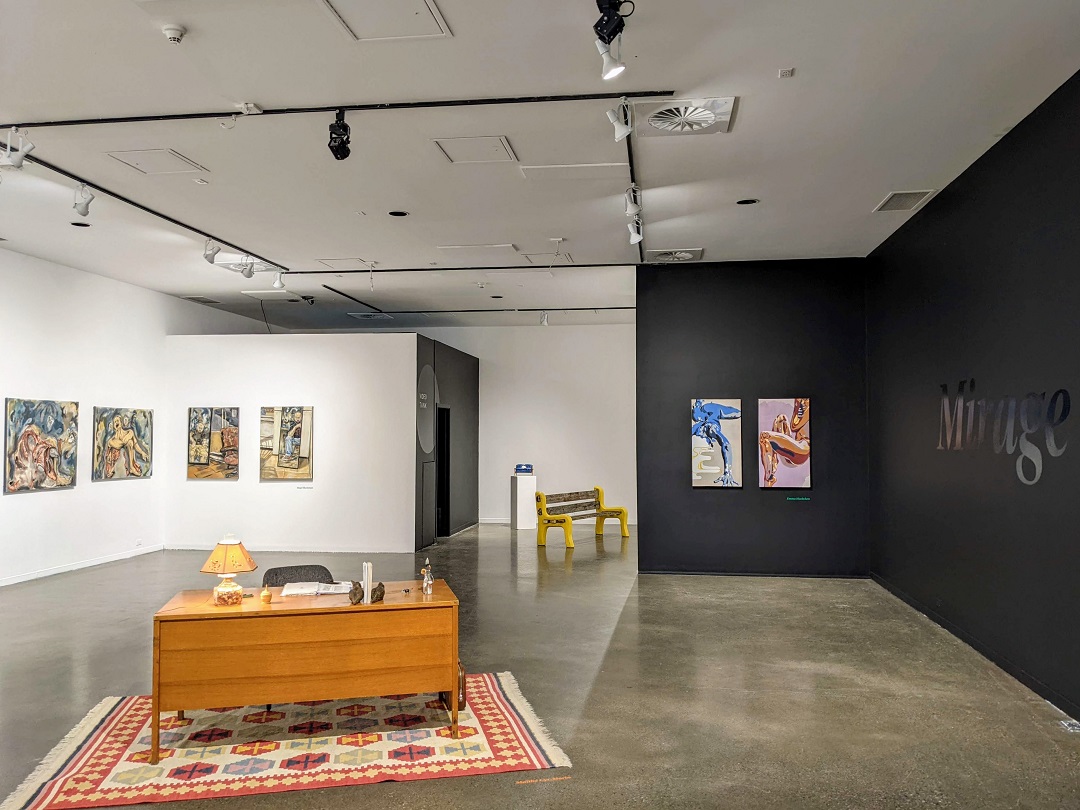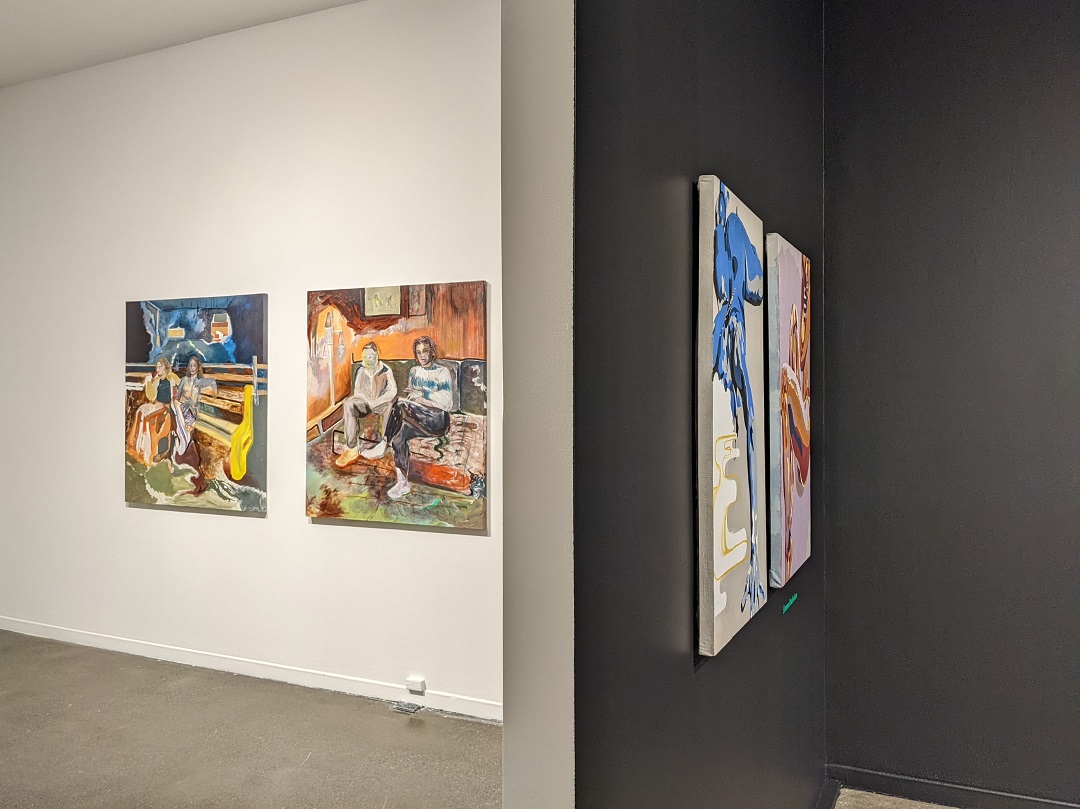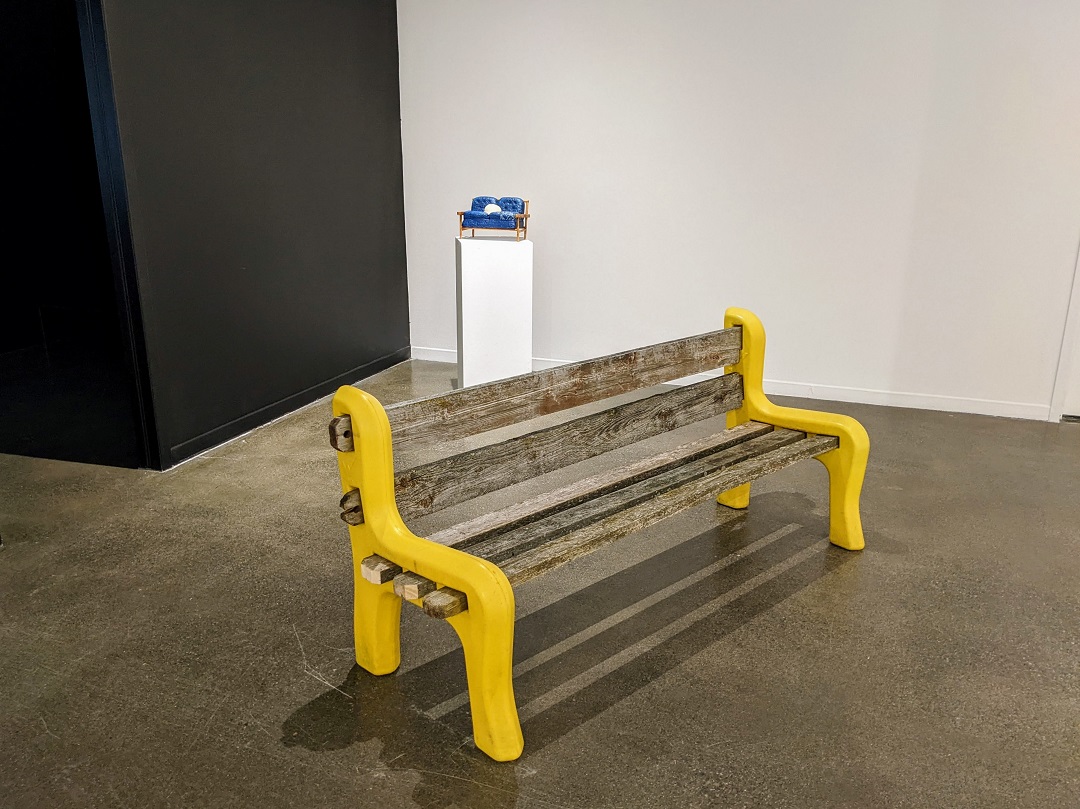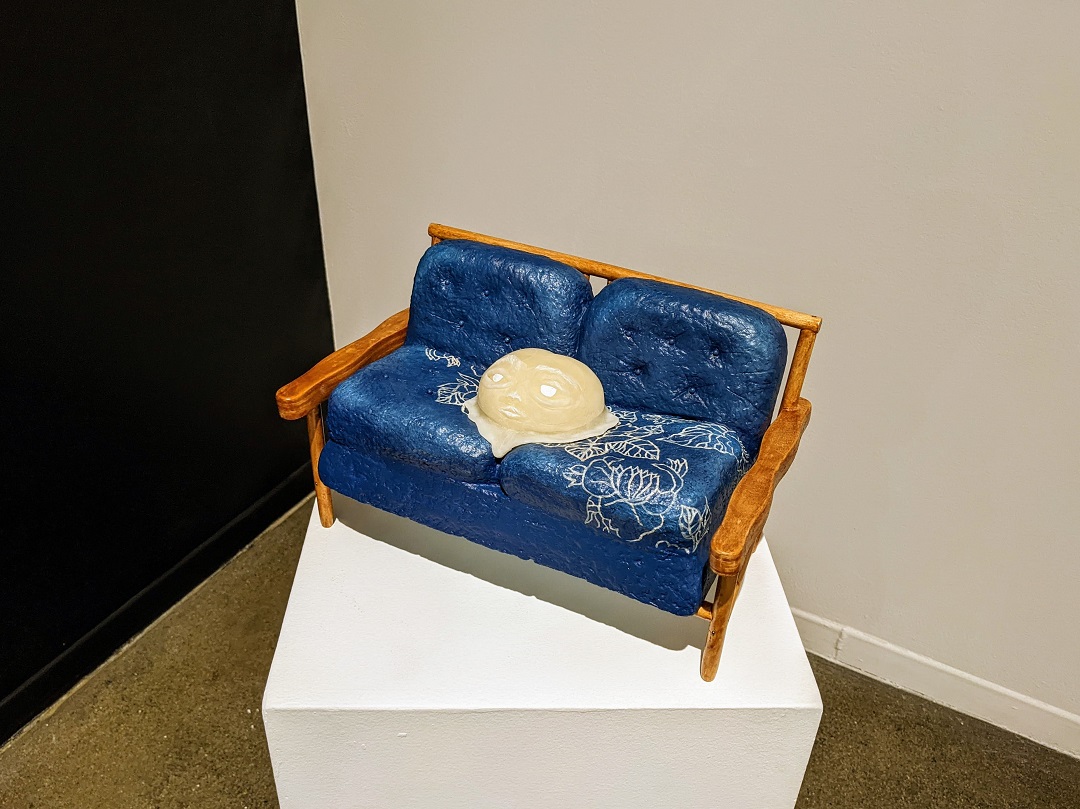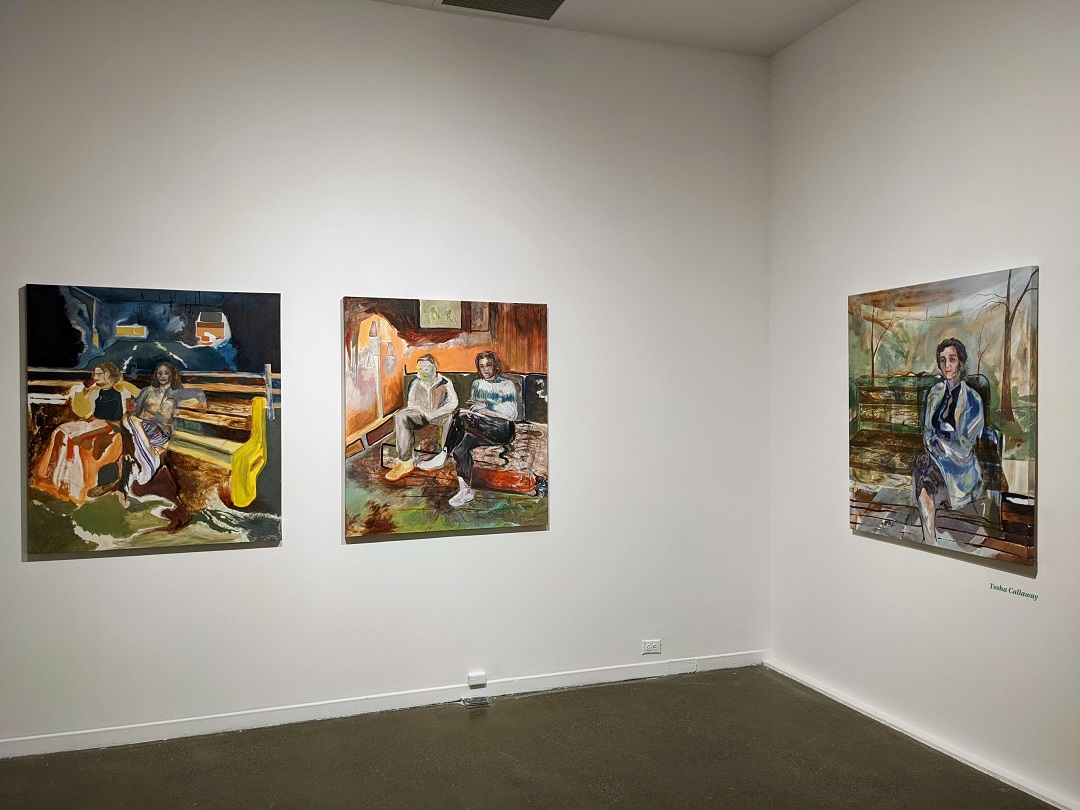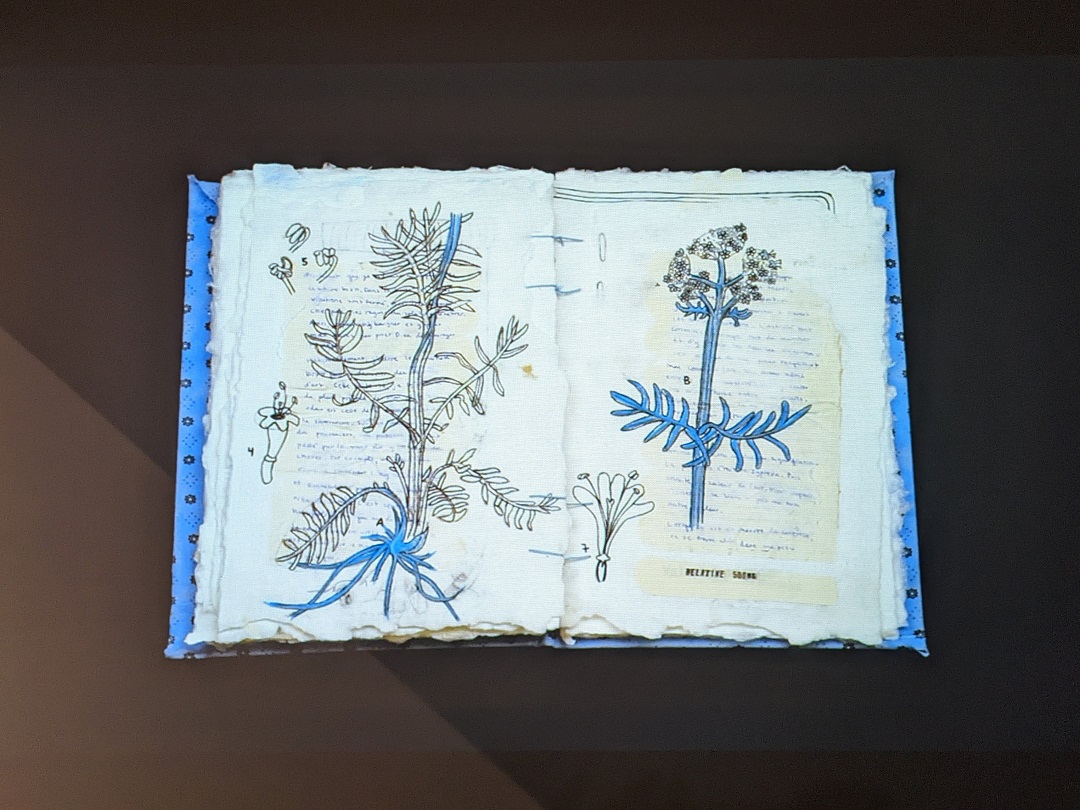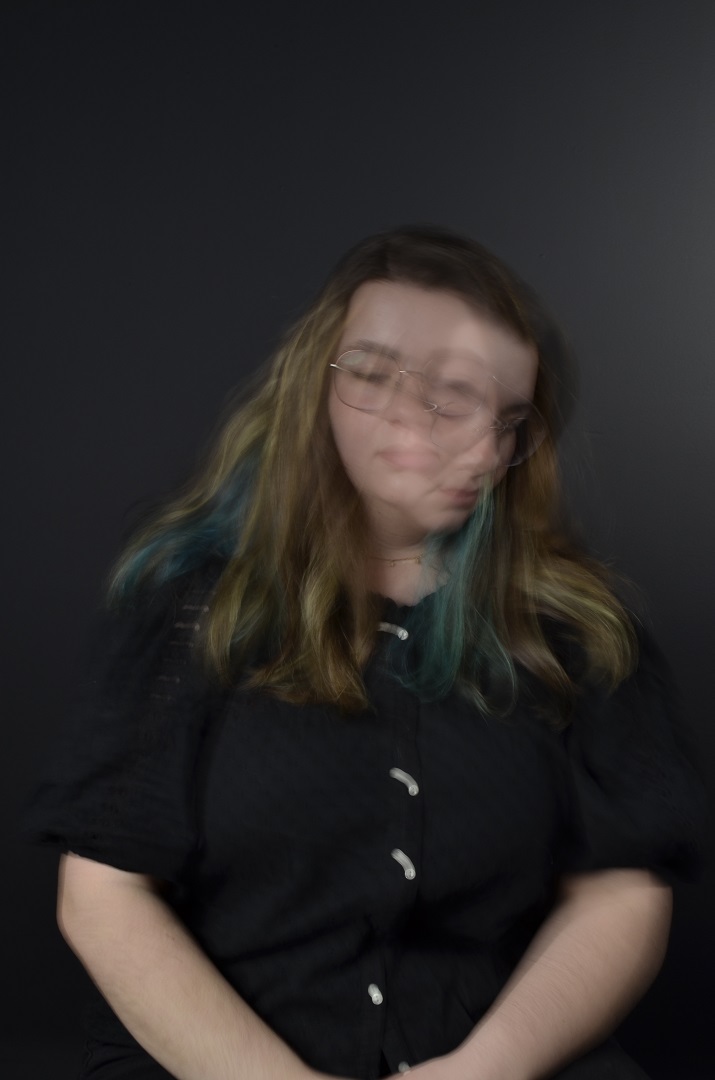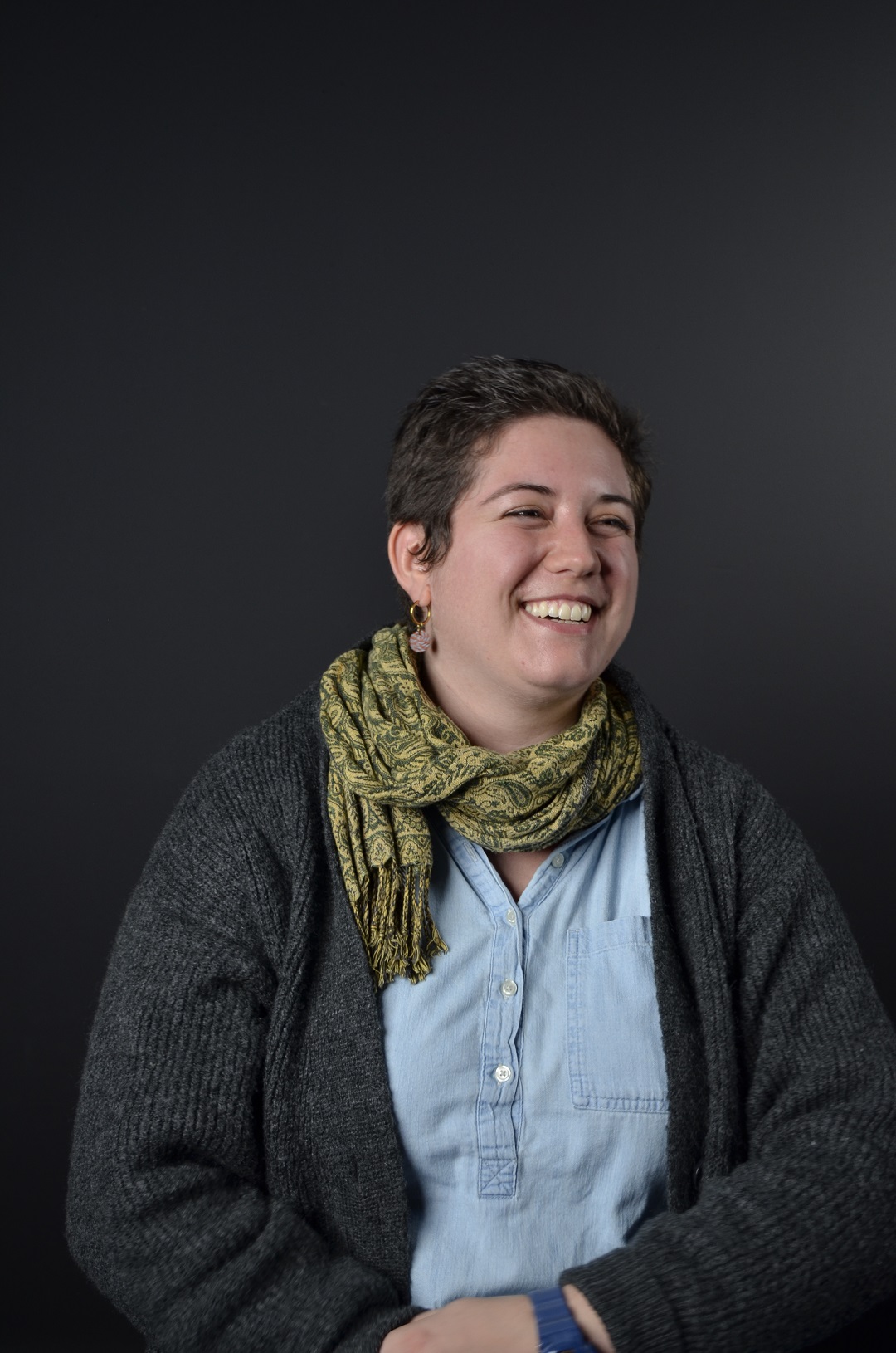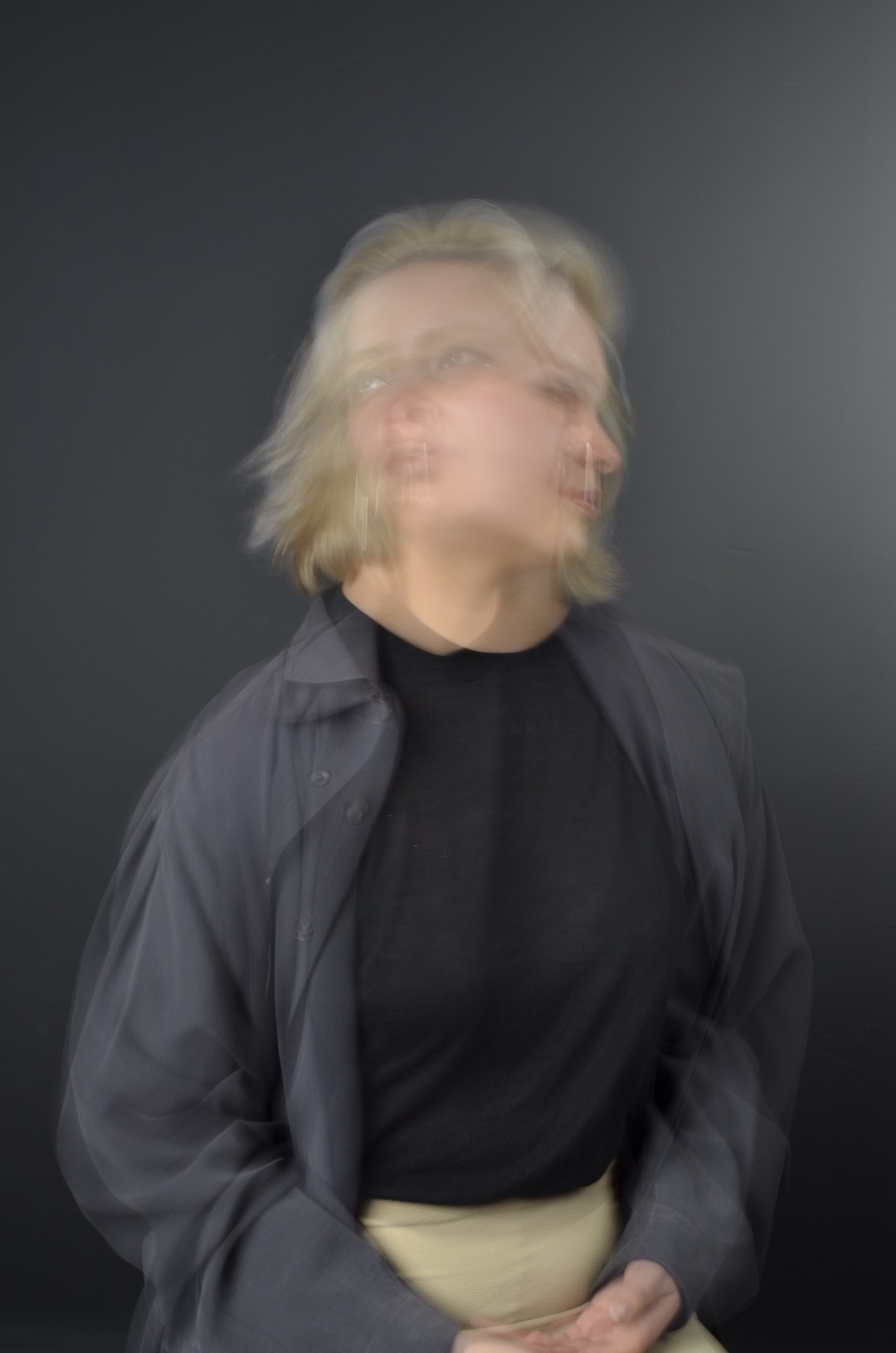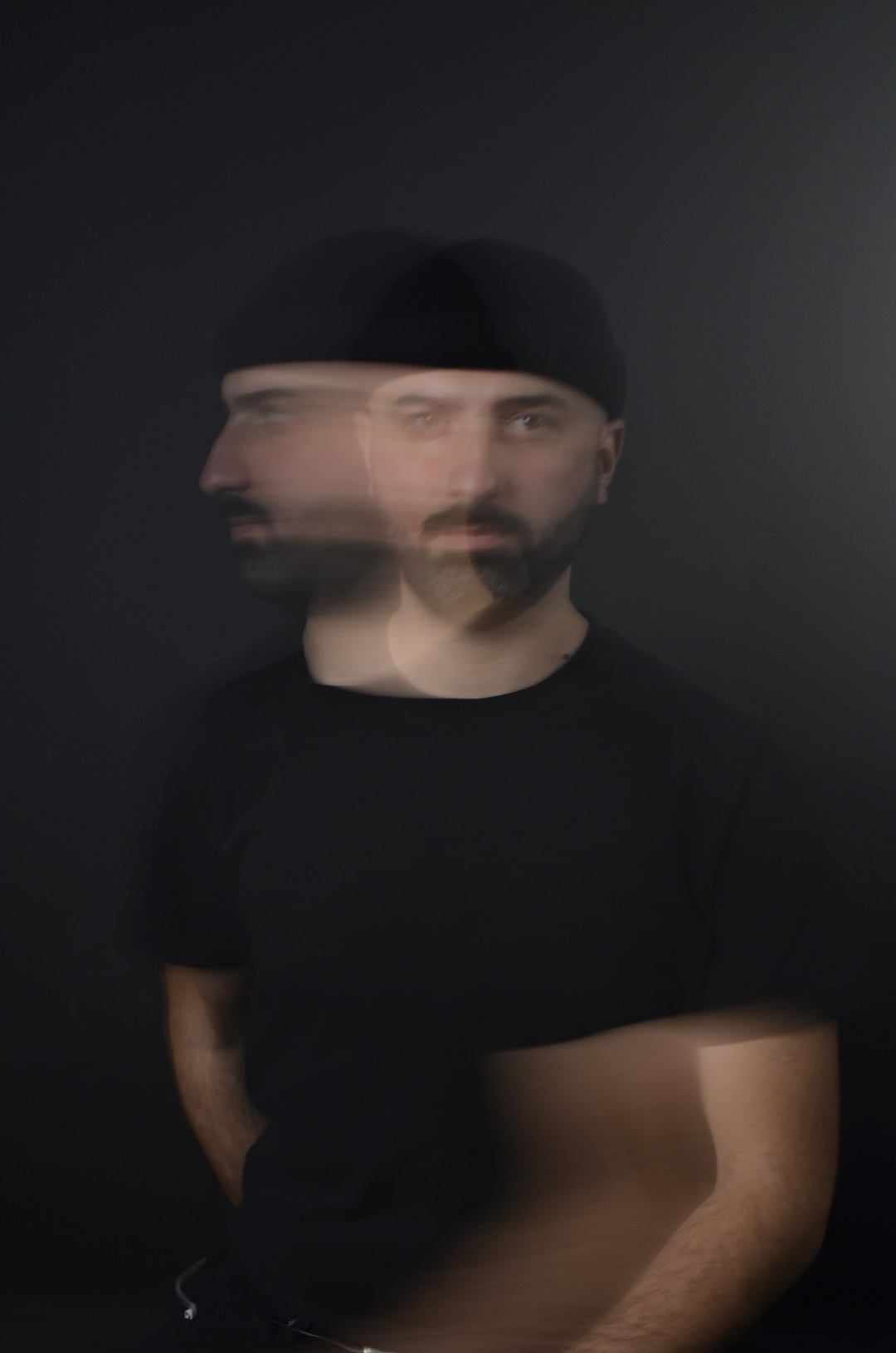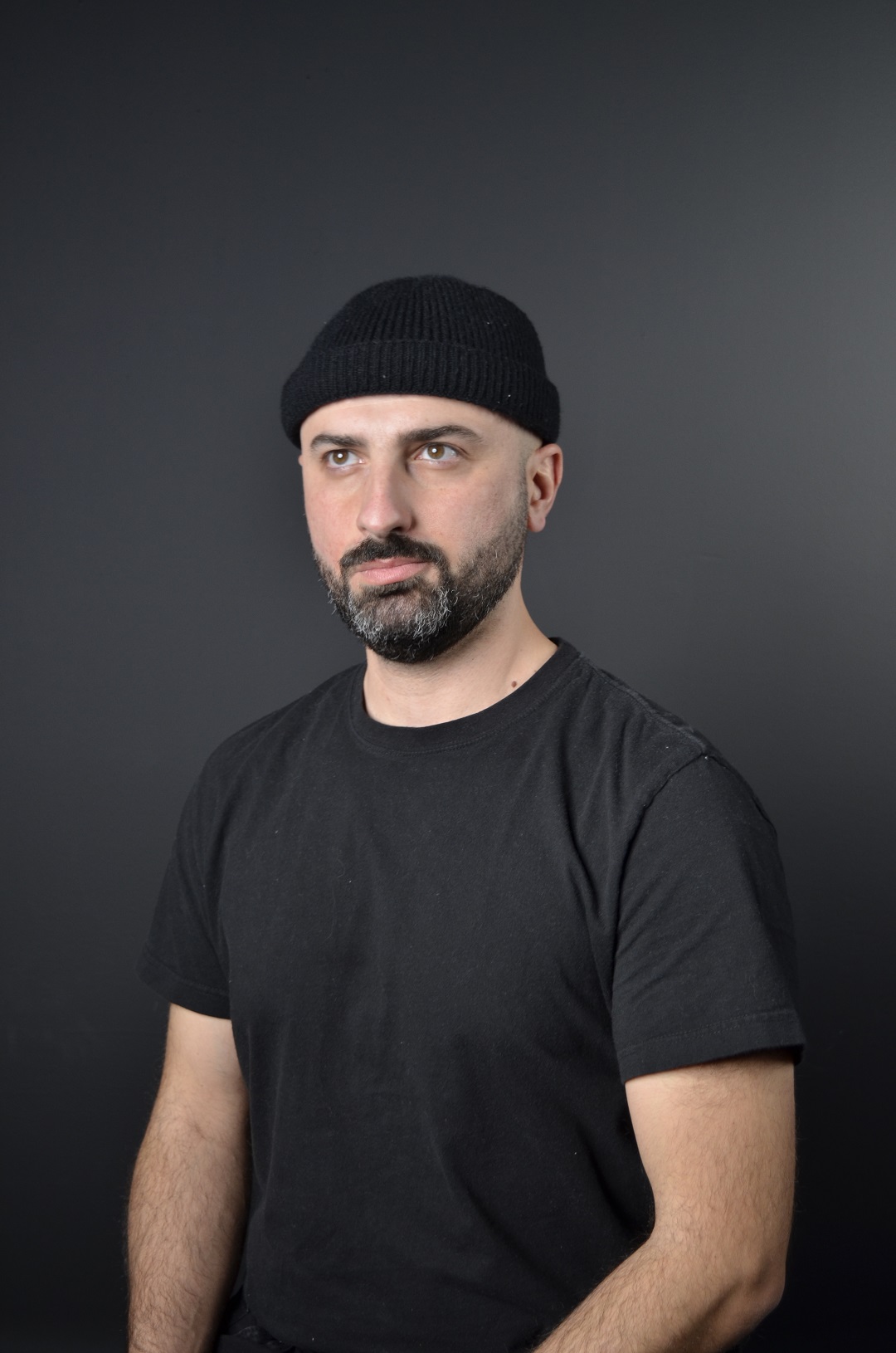
There are students who, once they’ve finished their studies, can’t leave campus quick enough. Off they head in search of adventure, degree in hand, brimming with ideas. There’s no looking back, no pause for thought: just full steam ahead.
But to every hare its tortoise . . .
Read more
Then there are those who like to meander, let their studies be shaped by opportunity and circumstance. Whether driven by curiosity or passion, these students stand out, their academic trajectories unfolding to the cadence of personal sensibility.
Four graduating students have chosen to crown their final year with a showing of their work in the 24th Bishop’s University Fine Arts Graduating Students’ Exhibition. Putting the end results of one’s artistic development on public display calls for a great deal of introspection and organization, a certain pride and above all, courage. In a year marked by uncertainty and caution, Tosha Callaway, Maïthé Cyr-Morin, Emma Huebchen and Majd Shammas have all braved adversity to present their work. Despite the lingering pandemic—a situation whose challenges only served to compound the brain fog that typically accompanies the end of an academic program—these four young artists were able to recognize and seize a golden opportunity: the chance to exhibit professionally for the first time, and in the very bosom of their alma mater. This amalgam of formative and familiar is what has given rise to Mirage.
In the literal sense, a mirage is an optical phenomenon referring to the distorted appearance of distant objects caused by the refraction (bending) of light as it travels through layers of hot and cool air. Metaphorically, a mirage is an illusion, a play of perspectives tinged with disenchantment. It refers to dreams or lies; it unearths the tensions of the psyche.
As the underlying theme of this year’s grad show, Mirage is more than a refractive phenomenon or a figure of speech: rather, it is the conceptual key linking the inquiries of four emerging artists.
At first sight, Tosha Callaway’s paintings pay tribute to suburban order and predictability, the passage of time and everyday intimacy. However, her practice revolves around what she dubs “dislocated elements.” Deftly inserted into the photorealism of her scenes, in a manner not unlike collage, are subtle sham details. Thus recomposed, her images convey an illusory nostalgia for middle-class consumerism.
Maïthé Cyr-Morin’s work draws on memory and the personal trauma that ensued from a stay in a psychiatric ward. Through collage, engraving and sewing, Cyr-Morin revisits her psychic state and the mental/bodily processes and feelings she was subject to at this specific point in her anamnesis. Paradoxical and euphemistic, her treatment of the materials follows her thought process, her introspection punctuated by recurring—often contradictory—symbols as imagination blurs reality, the tangible fades in and out of invisibility, and fact is confounded by metaphor. As it explores the mirages of the psyche, Cyr-Morin’s autobiographical work exposes the flaws in Quebec’s mental health care system.
Anthropomorphic representations of two distinct landscapes—the ocean around Vancouver Island and the blazing reds of the Eastern Townships in fall—Emma Huebchen’s painted nudes are odes to her two homes. Nature is central to her work, which is strewn with symbols: the curves of the human body recall deserted landscapes, and her unusual, near-monochrome palettes echo the fundamental elements of fire and water. An illusionist of anatomy, perspectives, patterns and colors, Huebchen deconstructs the familiar.
Uprooted by the ongoing war in Syria, Majd Shammas saw his world shatter and his existence, dominated by uncertainty. He has since observed his inner and outer selves subjected to a new tension that, though palpable on the surface, has roots that run very deep. “What you see of this tension is not the whole truth,” he explains. His questioning and reflections take form in his artistic practice through a large-scale production of canvases, drawings and prints addressing concepts that imposed themselves upon him—visible and invisible, tangible and intangible—as “fragments” of this new reality. Self-portraiture and the study of objects, patterns and shapes are his arsenal for expressing these shards of the real. A key feature in his self-portraits is the mirror, which he includes for its metaphorical aura. As the universal symbol of personal reflection and a surface conducive to the play of light, the mirror casts back at him his uncertainties and questions rather than any hard certainty.
A cultural oasis offering a pleasant-if-fleeting moment of respite in the chaotic zeitgeist of recent years, Mirage beckons us to give ourselves over to the illusion for the space of a visit.
Jessica Lintz
Student curator
Maïthé Cyr-Morin, La couleur du Zyprexa, 2022.
Handcrafted cotton paper made with diary pages, collagraph, watercolor and black felt pen, acrylic paint and hospital gown fabric, 30 x 20 x 2 cm.
TOSHA CALLAWAY
Originally from Stanstead, a small town bordering Vermont, Tosha Callaway will soon be graduating with a degree in Fine Arts and English, with concentrations in Studio courses and Literature, respectively.
Tosha decided to culminate the very last semester of her degree with an artist residency associated with the Foreman Art Gallery’s Community Art Lab (ArtLab).
Her preferred mediums are acrylic painting and drawing. She enjoys layering, glazing, and blurring paint, while her practice addresses concepts such as nostalgia, intertextuality, and transience.
She dreams of a threefold career as a professional artist, curator, and professor.
Artist Statement
“Sonder — n. the realization that each random passerby is living a life as vivid and complex as your own.” 1
Tosha Callaway sees painting as a vehicle to explore the concept of metacognition, a symptom of human nature that both causes isolation, but also motivates our desire to connect with others. By approaching conventional subjects—such as landscapes and domestic scenes—through a contemporary lens, she investigates the value that these longstanding art practices hold for both herself and the present-day viewer.
Originally from the Eastern Townships in Quebec, Callaway has always been interested in communal sensitivities to nostalgia for small town life. Moving to the city for her studies, she began to crop together scenes from highly populated cityscapes with everyday suburban scenes and urban landscapes. By fabricating shifting environments, she seeks to reveal a sense of dislocation between these two lifestyles.
More recently, Callaway has turned to depicting figures in their domestic environments. This intermingling of the new and the old marks a fundamental synchronization between her creative process and the conceptual outcome of her work. She is inspired by non-traditional portraiture, such as the poetic and narrative-based paintings of both Hernan Bass and the artist duo Markus Muntean and Adi Rosenblum. Callaway plays with contrasts of saturation and muted tones, and layering to emphasize the fragility of human cognizance. Moreover, the mundane nature of the scenes she portrays reflects her fascination with capturing moments of emotional ambiguity between individuals.
Despite their physical proximity, her figures often embody a feeling of disconnect that she presents as inherent to modern life. Her latest series explores intergenerational relationships, and the social division between folks of different ages that often complicates our views on life’s different phases.
1 John Koenig, 2021, The Dictionary of Obscure Sorrows (New York : Simon & Schuster, 2021).
MAÏTHÉ CYR-MORIN
In her fourth and final year studying Fine Arts with a concentration in Studio courses, Maïthé Cyr-Morin uses autofiction to explore themes such as the visible, the invisible, the imaginary, and truth.
Her practice in printmaking, textile art and bookmaking has led to her receiving the Wanda Rozynska Scholarship & Rozynski Opportunity Fund, an award granted to a deserving Fine Arts student.
Maïthé comes from the traditional and unceded territory of the Abenaki people and aspires to be a museum art educator.
Artist Statement
Maïthé Cyr-Morin’s work addresses themes such as the visible and the invisible through the lens of fictocriticism, mainly in the form of collage, printmaking, and sewing. The artist’s book is a key medium for her to investigate these ideas.
Reminiscent of personal memories and intimate in size, the book’s materiality invites the viewer to access the idiosyncratic revelations of the artist, at a well-calculated pace and impelling multiple senses. Through paper making and assemblage as processes inscribed in time and space, she plays with facsimile and the imaginary.
Cyr-Morin’s most recent work revolves around the psychological complexities of the individual within the framework of modern psychiatry as a convoluted social reality. Her exploration of the psyche is a way of healing and mending the tangled threads of her own experiences with mental illness, particularly with bipolar disorder.
The catharsis generated by this creative introspection allows Maïthé Cyr-Morin to create a vocabulary punctuated with bittersweet metaphors and latent symbols.
EMMA HUEBCHEN
Born in Comox, on Vancouver Island (BC), Emma Huebchen will soon be completing her five-year degree in Secondary Education, with a focus on Fine Arts. Upon graduation, she plans to become a part-time high school art teacher while nurturing her personal art practice by creating and selling artworks on the side.
Emma’s artistic practice revolves around the human body and its distortions. She plays with complementary color palettes and explores her own and others’ emotions and experiences, using acrylic markers and watercolors on paper, or acrylic on canvas.
Artist Statement
Emma Huebchen is fascinated by the natural patterns of the vessels we call home: the human body and the environment.
Inspired by both the vast ocean flowing around Vancouver Island—her hometown—, and the flourishing, colorful forests surrounding her current home in the Eastern Townships, Huebchen’s practice revolves around her interpretation of the body’s complex and multifaceted nature, through a process of simplification. She distorts and carves human anatomy, showing the fragility and shallowness of the bodily experience.
While particularly fond of watercolor, acrylic paint, and ink on wood, she creates with any medium available to her. Finding balance in large shapes, expansive color palettes, and bewildering patternmaking soothes her.
Huebchen’s work is a reflection of her interests in nature, fashion, and the body, as well as her own states of mind. Sensitive to the pressure and expectations weighing on her shoulders as she approaches graduation, she perseveres through hardships with a dream of becoming a part-time high school art teacher and a professional artist.
Through form, color, and elongated, contorted words, she processes difficult and pressing parts of her life. She records and imprints her emotions at the heart of her creative practice; she lets her pieces speak for her.
MAJD SHAMMAS
Uprooted by the ongoing war in Syria, Majd Shammas arrived in Québec in 2015, and he is currently undertaking his second year in Fine Arts with a concentration in Studio courses, here at Bishop’s.
He uses ink, charcoal, acrylics, and pastels soaked in oil as mediums to explore concepts that inspire him, such as hallucinations and tense realities, existential reflections and uncertainties.
Majd’s practice and work stand out: he recently was awarded the Florence May Foreman Scholarship, and the Peggy and David Savage Memorial Scholarship.
Artist Statement
When Majd Shammas was uprooted by the war in Syria, a world of certainty was shattered, and tension and uncertainty became predominant. From that point onwards, Shammas has been in a constant exploration of the resulting “fragments”.
While dismantling the whole into fragments allows for a better examination of one reality, the collecting and reassembling of these fragments offers an infinity of new possibilities. This process is at the core of Shammas’ artistic process. For him, the bolder the fragmentary impressions—in terms of visceral impact, asymmetry, movement, and aggressiveness—, the more vital it becomes to make images out of them.
Inspired by the realm of unconsciousness explored by Butoh dancers from Japan, Shammas’ latest series, Mirrors (2021-2022), consists of “inner-self-portraits” picturing daily existential reflections and uncertainties. They are abstract landscapes of hallucinations and realities derived from the tension between the emotional and the rational, the ethereal and the material, residing within, or on the body’s borders. They are reflections of the tension between what boils inside of us and what is transferred to the outside. The series portrays the inner commotion of the state of being.
Shammas’ fragmentary approach manifests itself in the coarse appearance of his surfaces, with strong brushstrokes, a marked distribution of color in space, and rough transitions of tones. His mixed media exploration spans over drawing, painting, and printmaking, while combining mediums like ink, charcoal, acrylics, and pastels soaked in canola oil to infuse his works with a specific ambiance.
We would like to extend our deepest thanks to the Bishop’s University Students Representative Council (BUSRC); Michael Goldbloom, C.M., Principal and Vice-Chancellor; Dr. Stine Linden-Andersen, Dean of Student Affairs; Dr. Michele Murray, Dean of Arts; Dr. Miles Turnbull, Vice-Principal Academic; Dr. James Benson, Chair, Department of Fine Arts; and the Bishop’s University’s Alumni Association for their generous financial contributions. We are also very grateful to Jacqueline Scott, Associate Vice-Principal, University Advancement; Sterling Mawhinney, Alumni Relations Coordinator, University Advancement; and Casey Hébert, Bishop’s University’s Alumni Association Social Media Manager for their tremendous help with our fundraising campaign.
We would also like to acknowledge the close collaboration between the Foreman Art Gallery and the Fine Arts Department of Bishop’s University in the coordination of this project. A very special thank you to the Fine Arts Department Technician Brenna Filion for her support and dedication throughout the organization of this exhibition.




